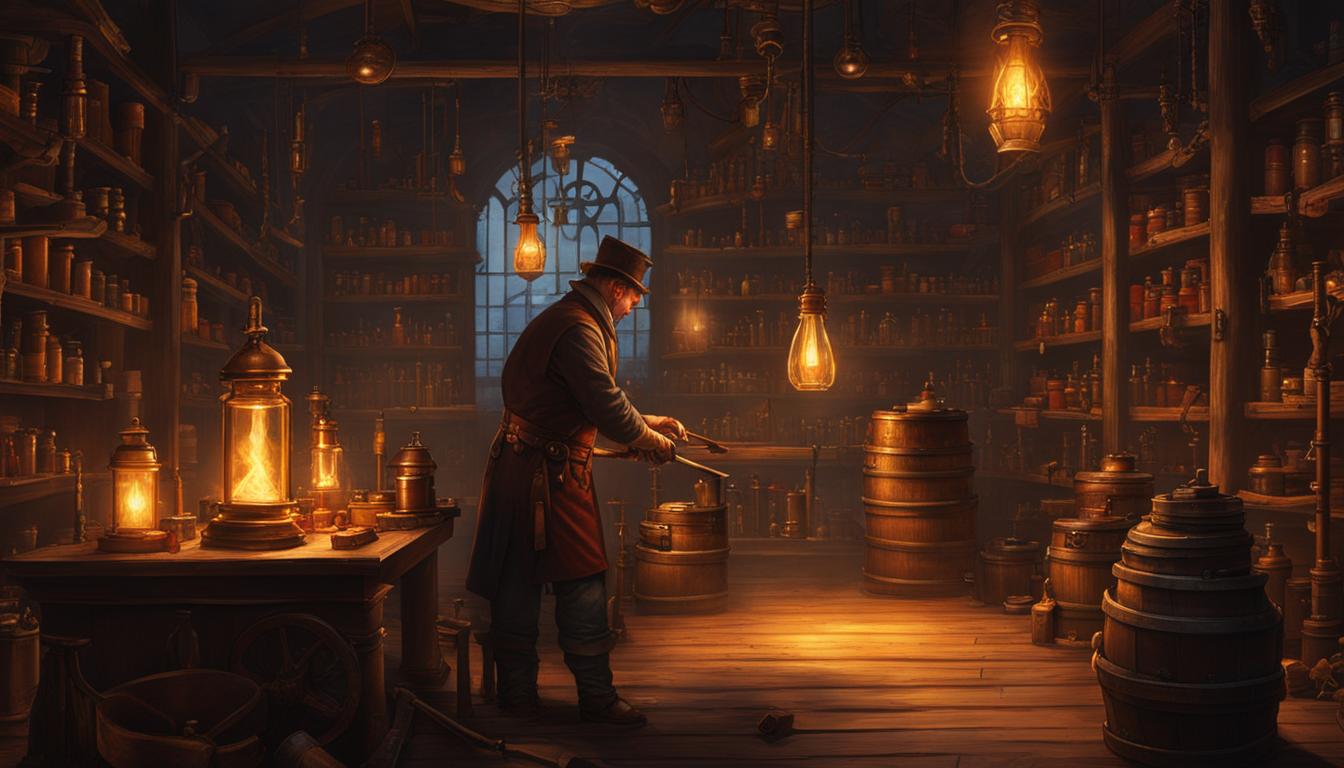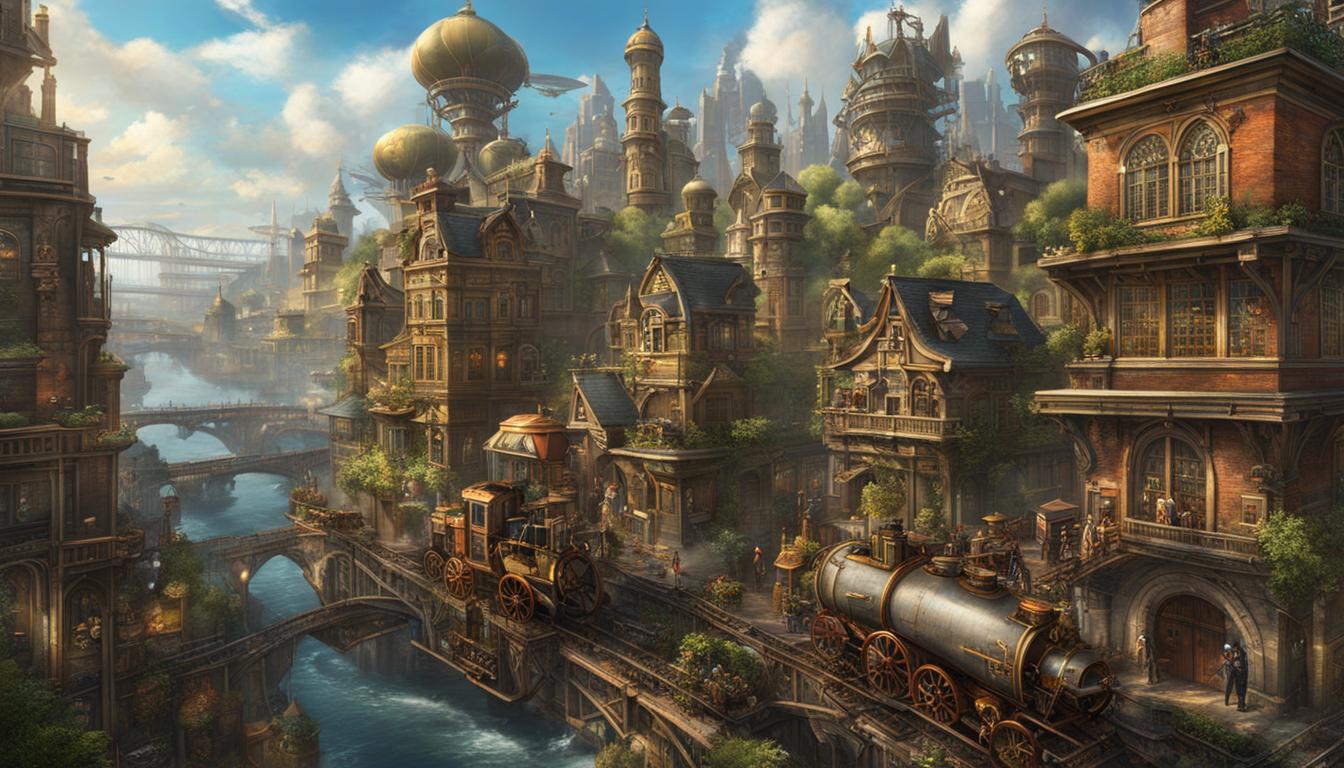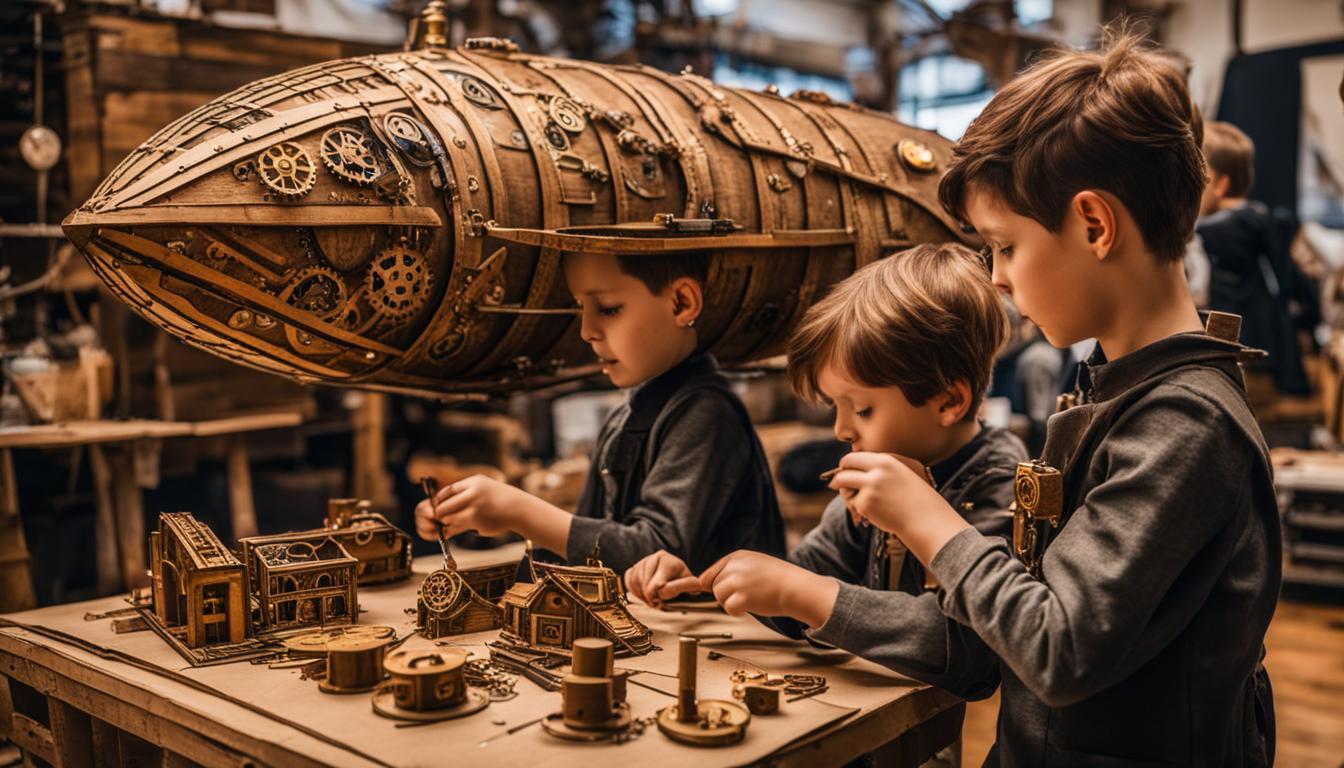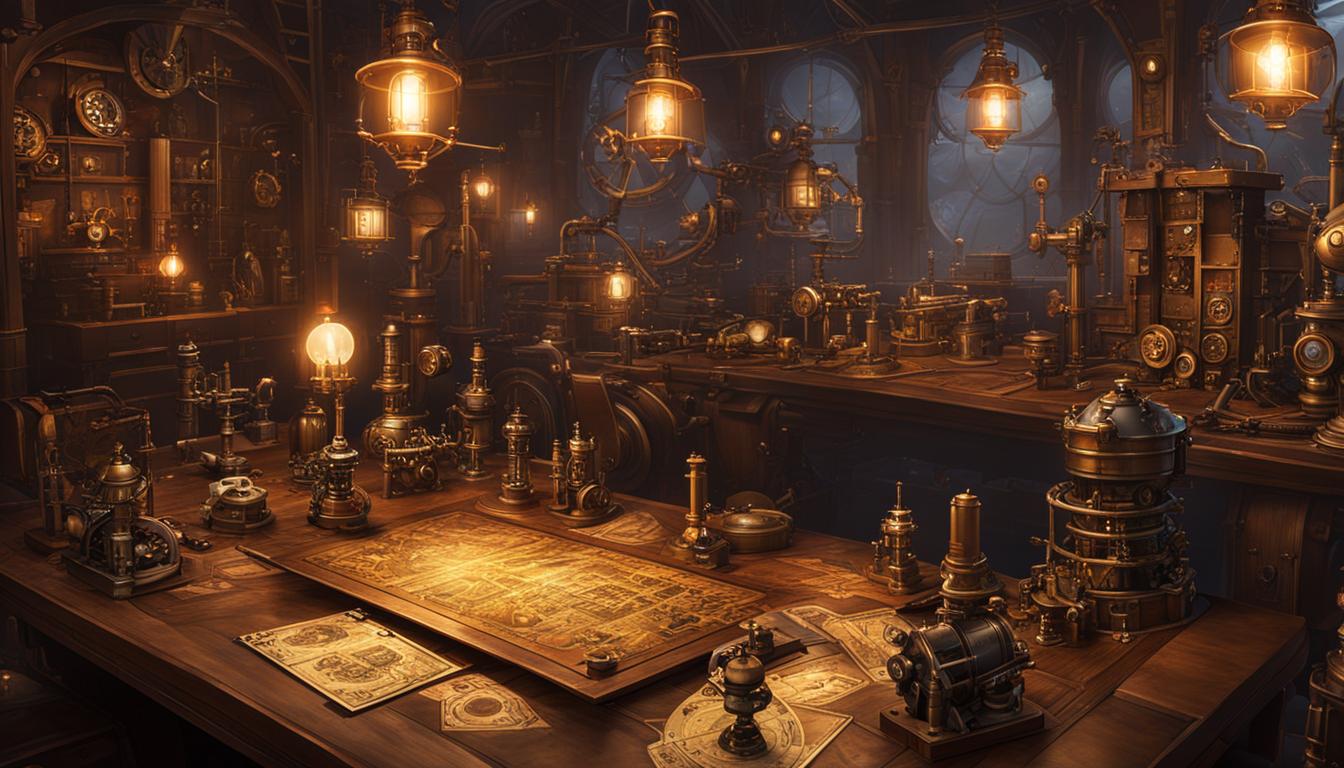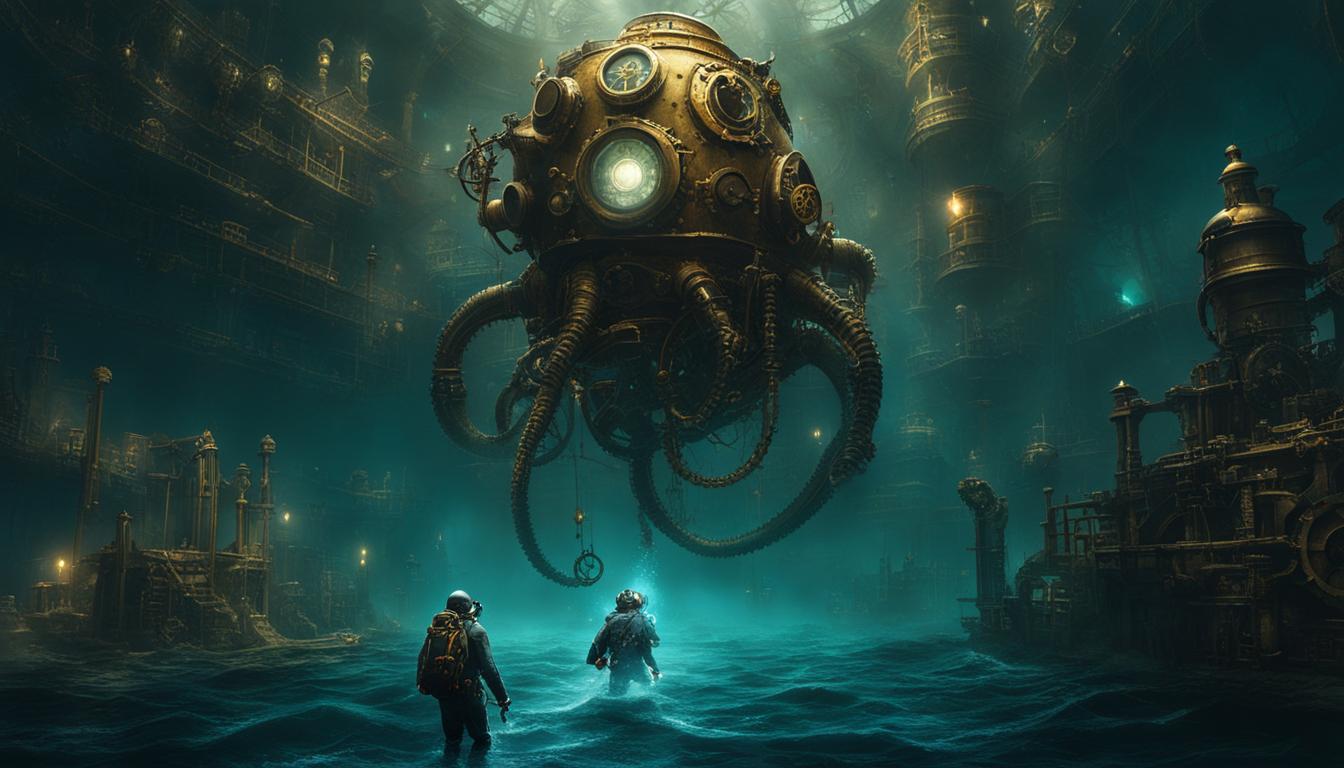Step into a world where Victorian elegance intertwines with futuristic innovation. Welcome to the captivating realm of steampunk, a subgenre of science fiction that has captured the imaginations of readers, artists, and filmmakers alike. In this article, we will delve into the techniques and strategies for creating immersive steampunk narratives filled with rich lore and legendary tales.
Steampunk, with its distinctive blend of Victorian aesthetics and steam-powered technology, offers a unique storytelling experience. By understanding the historical context of the Victorian era and the Industrial Revolution, writers can craft authentic steampunk worlds that resonate with readers. It is through meticulous research, attention to detail, and a dash of creativity that steampunk legends come to life.
Key Takeaways
- Steampunk is a subgenre of science fiction that blends Victorian-era settings with futuristic ideas.
- Understanding the historical context of the Victorian era and the Industrial Revolution is crucial in crafting a steampunk narrative.
- Research plays a pivotal role in creating authentic steampunk stories by incorporating historical authenticity, technological innovation, social context, and alternative histories.
- Steampunk often explores themes of rebellion, innovation, and social reform.
- By immersing oneself in existing steampunk works, writers can find their unique voice within the subgenre.
Understanding Steampunk Subgenre and Historical Context
Steampunk is a captivating subgenre of science fiction that transports readers to an alternate world where the Victorian era collides with futuristic ideas and steam-powered technology. To fully appreciate the intricacies of steampunk narratives, it is essential to grasp the historical context that serves as their foundation.
The Victorian era, characterized by its societal hierarchies and obsession with science, provides the backdrop for many steampunk stories. It was a time of rapid industrialization, marked by significant advancements in technology fueled by the steam engine. This period, known as the Industrial Revolution, witnessed groundbreaking innovations in transportation, communication, and manufacturing.
In steampunk, authors reimagine the Victorian era by infusing it with fantastical inventions and alternative historical narratives. This blending of history and imagination creates a rich and immersive world where steam-powered machinery and innovative contraptions take center stage. Steampunk themes often explore rebellion against societal norms, the limitless potential of scientific innovation, and the pursuit of social reform.
By understanding the steampunk subgenre and appreciating the historical context of the Victorian era and the Industrial Revolution, readers can embark on a thrilling journey through time and imagination. Through the talented storytelling of steampunk authors, they can witness the fusion of past and future, where steam-powered technology reigns supreme and the possibilities are truly endless.
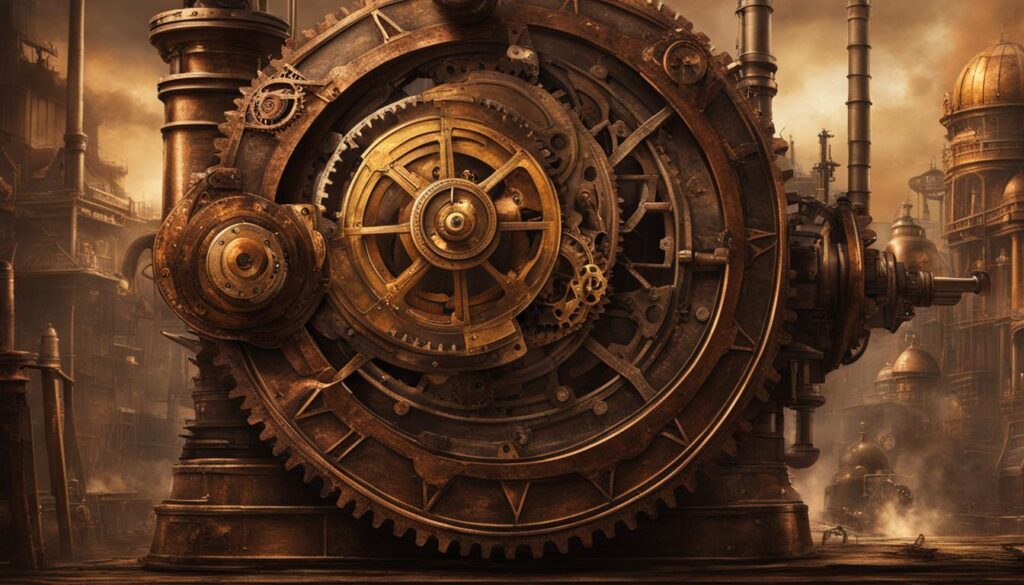
Table: Key Elements of Steampunk Subgenre
| Elements | Description |
|---|---|
| Victorian Era | A historical period characterized by strict social hierarchies, moral codes, and a fascination with science and exploration. |
| Industrial Revolution | A period of rapid industrialization and technological advancements, driven by steam-powered machinery and innovations. |
| Steam-Powered Technology | The use of steam as a primary source of power for machinery and inventions, often leading to imaginative and fantastical contraptions. |
| Alternative Historical Narratives | Reimagining historical events and figures within a steampunk world, offering a unique twist on established history. |
| Themes of Rebellion and Social Reform | Exploring ideas of challenging societal norms, pushing boundaries, and advocating for change and justice. |
Importance of Research and Creating the Steampunk World
Research is the key to unlocking the secrets of a captivating steampunk world. To ensure historical authenticity, writers must delve into the depths of the Victorian era to understand its social dynamics, cultural nuances, and pivotal events. Armed with this knowledge, they can seamlessly weave real historical figures, locations, and events into their narratives, adding a layer of credibility to their stories.
Technological innovation is at the heart of steampunk, and writers need to have a firm grasp on steam-powered technology, mechanical engineering, and the inventions of the past. By understanding the inner workings of these intricate devices, they can create believable and awe-inspiring contraptions that will leave readers in awe.
But it’s not just the gadgets and gizmos that make a steampunk world come alive. To truly transport readers to a different time and place, writers must also explore the social context of the 19th century. Class distinctions, gender roles, and political ideologies all played a significant role in shaping the Victorian era, and incorporating these elements into the narrative will add depth to characters and plotlines.
Steampunk is a genre that thrives on alternative histories, and writers should embrace this opportunity for creative storytelling. By researching key historical turning points, technological advancements, and cultural shifts, they can weave intricate tales that diverge from the path of reality. This freedom allows for boundless creativity and the formation of unique narratives that captivate readers’ imaginations.
FAQ
How do I craft rich steampunk lore and legends?
Crafting rich steampunk lore involves techniques such as incorporating historical elements, reimagining inventions, and exploring social dynamics. Building a steampunk mythology entails creating alternative histories, incorporating real historical figures, and events, and incorporating themes of rebellion, innovation, and social reform.
What is the historical context of the steampunk subgenre?
The steampunk subgenre draws inspiration from the Victorian era and the Industrial Revolution. This historical context includes strict social hierarchies, moral codes, a fascination with science and exploration, and steam-powered technology. Understanding the social nuances, technological marvels, and transformative power of the Industrial Revolution is crucial in crafting an authentic steampunk narrative.
Why is research important in creating a steampunk world?
Research plays a vital role in crafting an authentic and compelling steampunk story. By immersing oneself in the Victorian era, understanding social dynamics, cultural norms, and important events, writers can seamlessly incorporate real historical figures, locations, and events into their narratives. Researching steam technology, mechanical engineering, historical inventions, and key historical turning points allows writers to create believable and intricate devices and alternative histories within their steampunk worlds.

